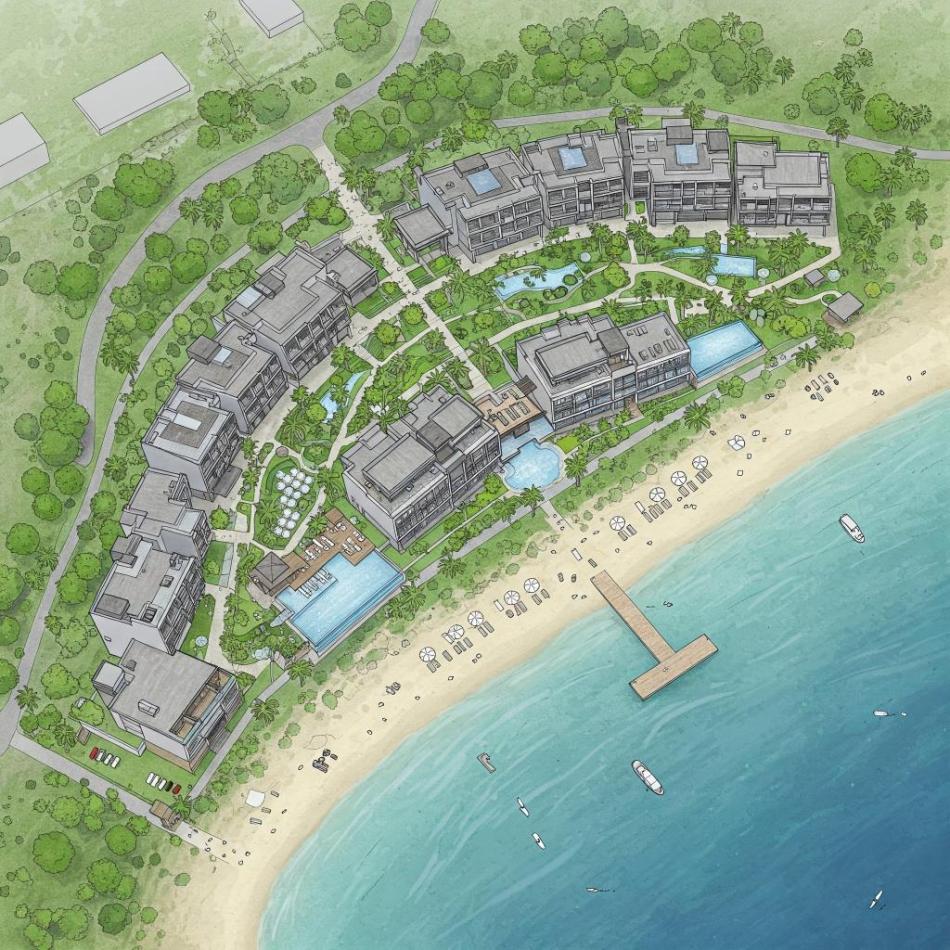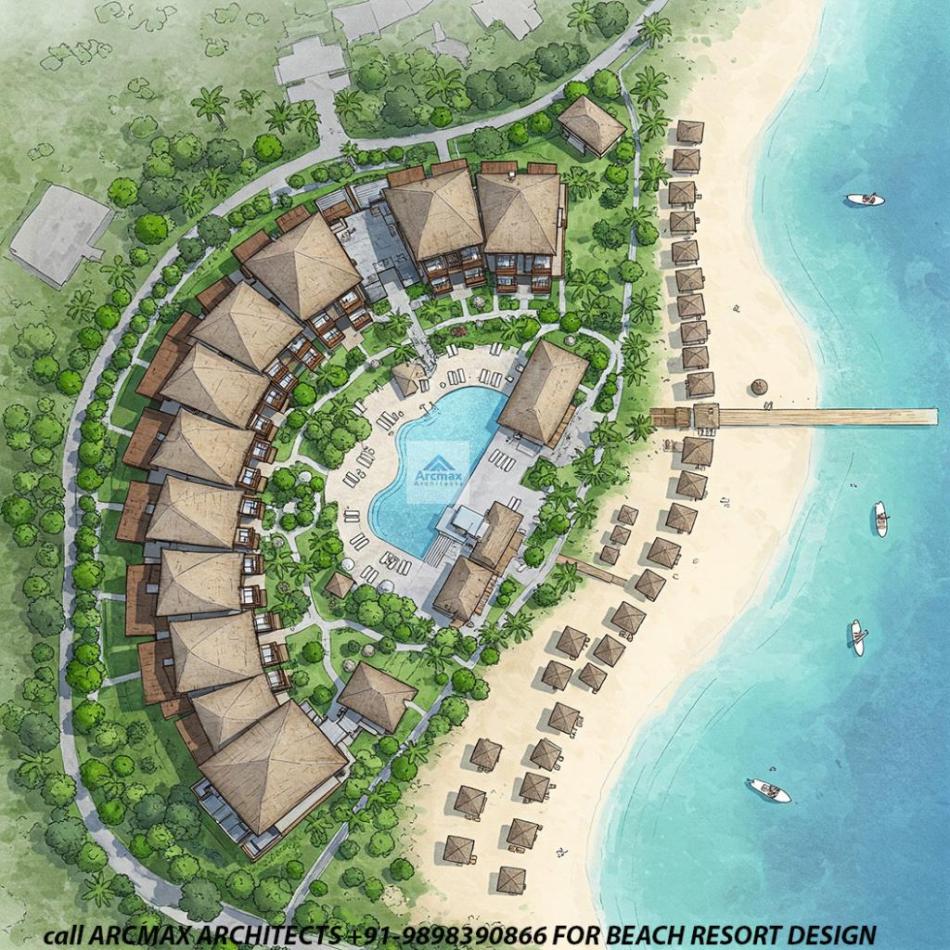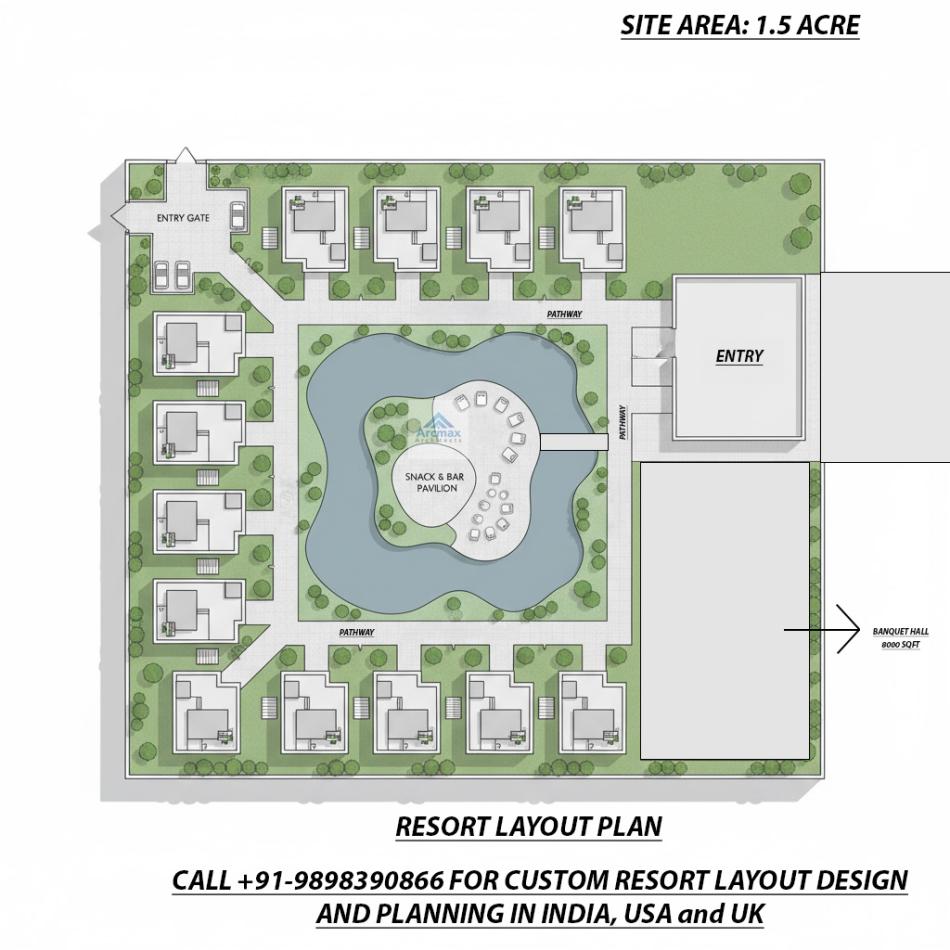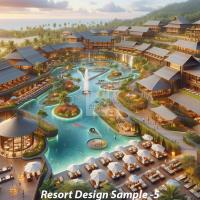Bakeri City, Pincode: 380015 Ahmedabad, Gujarat, India,
244 Madison Avenue, New York, United States
Our Client






Environmental and sustainable design
Environmental and sustainable design in the context of resort development is a holistic approach that integrates eco-friendly principles from the inception of the project through to its daily operations. This approach not only seeks to minimize the environmental footprint of the resort but also aims to enhance the well-being of guests, staff, and the local community, while promoting long-term sustainability and resilience against environmental changes. Here’s how environmental and sustainable design principles can be applied in the development and operation of a resort:
1. Site Selection and Preservation
Choosing the right site is crucial for minimizing the environmental impact of the resort. The site should be selected based on criteria that include avoiding sensitive ecosystems, minimizing land alteration, and leveraging the natural landscape for passive heating, cooling, and lighting. Efforts should be made to preserve the natural features and biodiversity of the site, protecting native species and their habitats.
2. Sustainable Architecture and Materials
The architectural design of the resort should follow sustainable practices, including the use of renewable or recycled materials that have a low environmental impact. Buildings should be oriented to take advantage of natural light and ventilation, reducing the need for artificial lighting and air conditioning. The use of green roofs, natural insulation materials, and energy-efficient windows can further reduce energy consumption.
3. Energy Efficiency and Renewable Energy
A key aspect of sustainable design is the reduction of energy use and the integration of renewable energy sources, such as solar panels, wind turbines, and geothermal heating and cooling systems. These systems can significantly reduce the resort's carbon footprint and operational costs. Energy management systems can also be installed to monitor and control energy use throughout the resort.
4. Water Conservation and Management
Water conservation measures, including low-flow fixtures, rainwater harvesting, and the recycling of greywater for irrigation, are essential for sustainable resort design. These measures help reduce the demand on local water resources and minimize the resort's impact on the surrounding environment.
5. Waste Reduction and Recycling
Implementing comprehensive waste management strategies that prioritize reduction, reuse, and recycling can significantly lessen the environmental impact of the resort. Composting organic waste, offering bulk dispensers for toiletries, and using biodegradable cleaning products are just a few ways resorts can achieve this goal.
6. Sustainable Landscaping
Landscaping should be designed with native plants that require minimal irrigation, fertilizers, and pesticides. Sustainable landscaping practices not only conserve water but also provide habitats for local wildlife, enhancing biodiversity.
7. Eco-Friendly Transportation
Encouraging the use of eco-friendly transportation options, such as bicycles, electric vehicles, and shuttle services, can reduce the carbon footprint associated with guest travel to and from the resort. Providing charging stations for electric vehicles and designing pedestrian-friendly pathways encourage guests to opt for more sustainable modes of transportation.
8. Supporting Local Communities
Sustainable resort design extends beyond environmental considerations to include social and economic benefits for the local community. This can be achieved by employing local staff, sourcing goods and services from local suppliers, and offering cultural experiences that promote local heritage and traditions.
9. Guest Education and Engagement
Educating guests about sustainability practices and offering them opportunities to participate in conservation efforts, such as tree planting or beach clean-ups, can enhance their experience and promote environmental awareness.
10. Continuous Improvement and Certification
Pursuing sustainability certifications from recognized organizations can provide benchmarks for environmental performance and guide continuous improvement efforts. Regularly assessing and updating sustainability practices ensure that the resort remains at the forefront of environmental and sustainable design.
By integrating these principles, a resort can achieve a harmonious balance between luxury and environmental stewardship, offering guests a unique and enriching experience while contributing to the preservation and enhancement of the natural and cultural environment for future generations
Want a Quotation please fill the form
- Resort Master Planning
- Hospitality Design
- Resort Landscape Architecture
- Environmental and Sustainable Design
- Cultural and Thematic Resort Design
- Restaurant and Retail Design
- Waterfront and Beachfront Development
- Luxury and Exclusive Resorts
- Eco-Resorts and Retreats
- Adventure and Sports Resorts
- Heritage and Restoration Projects
- Resort Architecture Design


























































